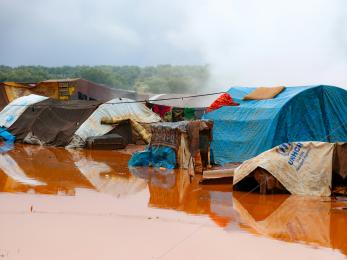Anticipating Agriculture Conditions in Sudan
Supporting Farmers to Avoid Another Underproductive Harvest

Download the overview briefing paper ▸
Download the Gedaref state profile ▸
Download the South Kordofan state profile ▸
Download the Blue Nile state profile ▸
Download the Kassala state profile ▸
The outbreak of conflict in Sudan on 15 April 2023 has severely impacted food security and agricultural production in the country. In February 2024, 37% of the population were estimated to be in IPC Phase 3 (crisis) or above - the highest proportion on record in the post-harvest period in Sudan. The 2023 production of sorghum and millet - staple foods for much of the population - is estimated at 24% and 50% lower than in 2022, respectively.
Given the ongoing impediments to humanitarian access and importance of agriculture for livelihoods in Sudan, domestic food production will be a key determinant of food security in 2024. Mercy Corps in Sudan aims to reduce vulnerability and increase income and food security for farmers, and in 2023 provided support to smallholder farmers throughout the agricultural season.
In preparation for the 2024 season and to inform agricultural assistance planning, Mercy Corps has conducted analysis aiming to provide an indication of opportunities and risks to agricultural production in four states: Gedaref, Blue Nile, South Kordofan, and Kassala.
Remote Sensing and Vegetation Modeling to Anticipate Agricultural Conditions
To anticipate agricultural conditions, Mercy Corps Technology for Development (T4D), Crisis Analysis, and Sudan teams collaborated with external consultants to produce projections of cropland vegetation health until July 2024. Analysis used satellite imagery and machine learning to construct a model to spatially predict vegetation health based on expected weather conditions, with secondary data analysis to understand the interaction of weather conditions with other drivers of agricultural productivity.
Key Findings include:
- Projections of cropland vegetation health suggest that the summer planting season will start positively, with favourable levels of rainfall and soil moisture. Targeted assistance to farmers is essential to take advantage of such conditions, as they are likely to struggle to produce due to economic impacts of conflict.
- Projected conditions vary across the four states, with cropland vegetation health expected to be particularly positive in central Gedaref, and less positive in Northeastern Gedaref and southern Kassala as well as pockets of South Kordofan and Blue Nile. An area-based approach to response planning is essential to tackling localised drivers of food insecurity, considering market functionality and households’ purchasing power alongside agricultural production.
- Conditions must be monitored carefully as the season progresses. Projections cover only until July 2024 and are solely based on expected weather conditions, not considering conflict and socioeconomic factors. In the 2023 season, comparative vegetation health changed mid-season, partially attributable to both direct and indirect impacts of conflict. Spread of conflict further into the four assessed states, as well as continued impediments to humanitarian access, pose a critical risk to agricultural production in 2024.

